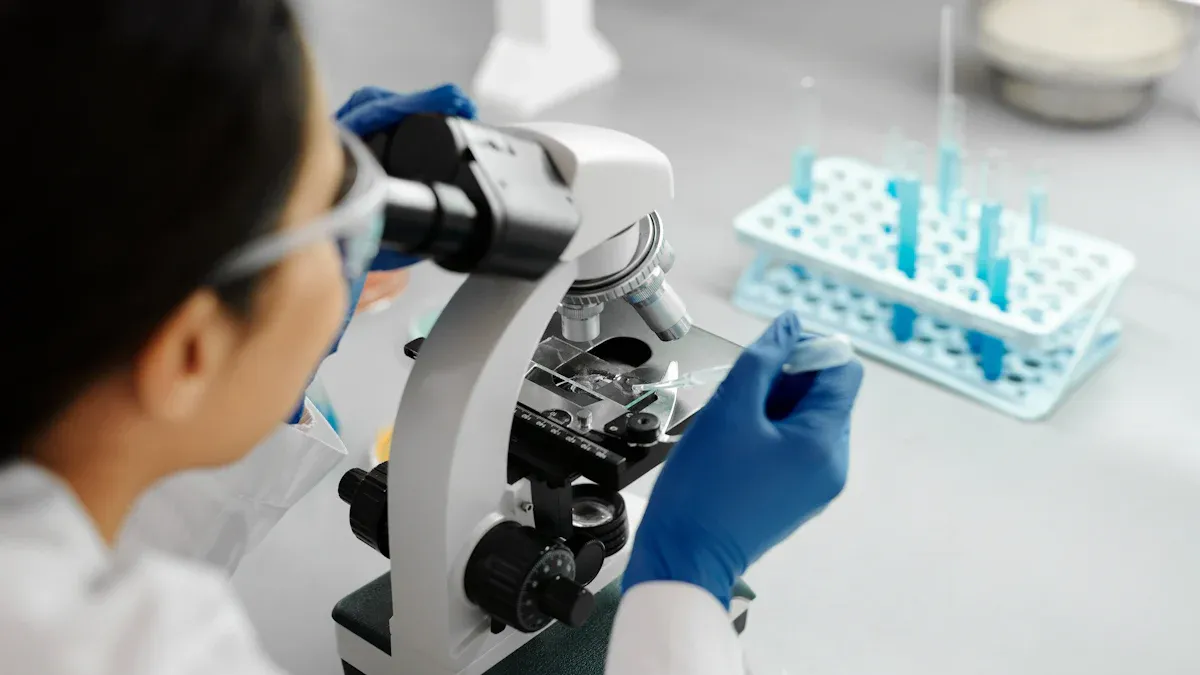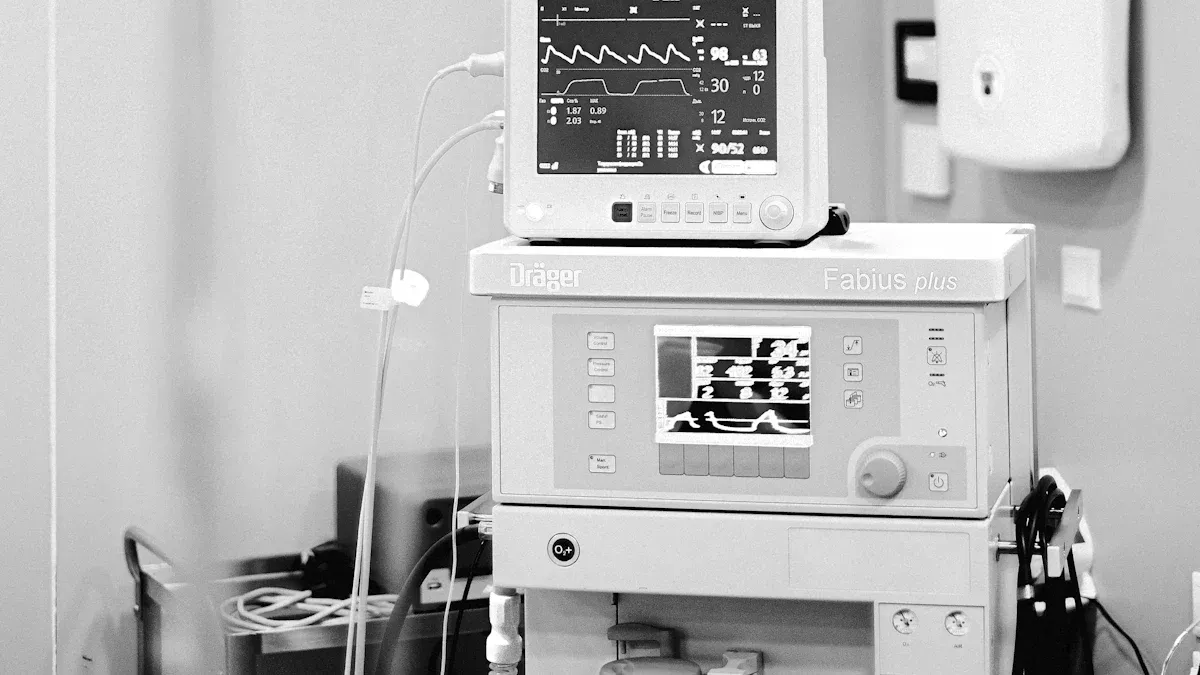How Nitinol Tubing Revolutionizes Cardiovascular Devices Today

Nitinol tubing for cardiovascular devices has revolutionized heart treatments with its unique features. Its superelasticity allows devices to bend and move without breaking, making it ideal for navigating the heart's tiny pathways. The shape memory property enables devices to return to their original shape after bending, which enhances accuracy during surgeries. These characteristics have made less invasive treatments safer and more efficient. The nitinol medical device market underscores its significance, with projections indicating growth from $20.4 billion in 2024 to $35.8 billion by 2033. This growth highlights how nitinol tubing for cardiovascular devices is advancing medical technology.
Key Takeaways
Nitinol tubing is important for heart devices because it is super stretchy and remembers its shape.
This tubing helps doctors do smaller surgeries, making them safer and helping patients heal faster.
Nitinol is safe for the body and can stay inside without causing problems.
The growing use of nitinol shows how it is helping improve heart care tools.
New ideas like 3D printing and smart computers make nitinol tubing better for medical devices.
Overview of Nitinol Tubing
What is Nitinol?
Nitinol is a mix of nickel and titanium. It is used in engineering and medicine. This alloy has about 50-51% nickel and 49-50% titanium. Its special mix gives it amazing abilities like shape memory and super elasticity. Nitinol can go back to its original shape after being bent. This makes it great for moving parts. In heart medicine, Nitinol tubing has changed how devices are made. It helps with less invasive surgeries and better patient care.
Key Scientific Properties of Nitinol
Nitinol's unique traits come from its phase changes. It switches between two forms: austenite and martensite. Austenite is strong and stable. Martensite is flexible and bendable. This lets Nitinol stretch 6-8% without breaking. Its strength ranges from 240 MPa to over 690 MPa, making it tough. Nitinol is also safe for the body and does not rust. These features make it perfect for heart devices like stents and guidewires.
Advantages of Nitinol Tubing for Cardiovascular Devices
Nitinol tubing has many benefits for heart devices. Its super elasticity helps devices move through small body paths without damage. The shape memory lets devices, like stents, be squeezed for placement and then expand to fit. Nitinol is safe for the body, lowering bad reactions. It also resists wear and rust, lasting a long time in the body. Companies like AccuPath use these traits to make top-quality Nitinol tubing. This drives new ideas in medical tools.
Why Nitinol is Perfect for Heart Devices
Safe and Body-Friendly
Nitinol is safe for use in medical tools. Its nickel-titanium mix lowers bad body reactions. This is important for heart devices like stents and guidewires. These tools stay in the body for a long time. Nitinol tubing fits well with the body, reducing swelling or rejection. It also resists rust, stopping harmful particles from entering the blood. These features make nitinol a trusted material for heart treatments.
Strong and Flexible for Moving Parts
The heart moves all the time, needing tough materials. Nitinol is very flexible and super stretchy. It bends and stretches without breaking, perfect for heart pathways. Tests show nitinol works better than other materials.
Feature | Nitinol | Other Materials |
|---|---|---|
Elasticity | Very stretchy | Less stretchy |
Superelasticity | Handles big strain | Breaks under strain |
Flexibility | Bends easily, no kinks | Often stiff or rigid |
The FDA checks nitinol stents for wear and tear. Studies show nitinol stays strong even after repeated use. This means nitinol devices work well in the heart’s tough environment.
Long-Lasting and Rust-Free
Nitinol doesn’t wear out or rust easily. Heart tools like stents use nitinol because it handles bending and stretching. These stents shrink to fit and then expand in blood vessels. This lowers the chance of blockages and helps patients heal better. Nitinol’s rust resistance keeps devices safe and working for a long time. It handles stress from both movement and chemicals, making it a top choice for heart tools.
Applications of Nitinol Tubing in Cardiovascular Devices

Stents
Nitinol tubing has changed how stents are made and used. Stents help open blocked arteries to improve blood flow. Nitinol's shape memory lets stents fit blood vessels naturally. This lowers the chance of vessel damage and helps patients recover better. Self-expanding stents made from nitinol grow to the right size after placement. These stents reduce the need for major surgeries.
Application | Description | Benefits |
|---|---|---|
Self-expanding stents | Adjusts to body shape using shape memory. | Avoids invasive surgeries, improves success. |
Restoring blood flow | Fits vessel curves, lowering damage risks. | Boosts long-term recovery for patients. |
Nitinol stents are strong and safe, making them popular for heart treatments today.
Guidewires
Guidewires made with nitinol tubing are flexible and precise. They are key tools for less invasive heart procedures. Nitinol's superelasticity keeps guidewires strong under pressure. This helps them move through tricky pathways without bending or breaking.
Benefits of nitinol guidewires:
Less pain for patients during procedures.
Better accuracy in tight or curved areas.
Faster healing due to smaller cuts.
Property | Benefit |
|---|---|
Superelasticity | Stays strong under strain |
Flexibility | Moves easily through narrow spaces |
Biocompatibility | Lowers risk of harm to the body |
These features make nitinol guidewires important for safer and better heart care.
Catheters and Other Devices
Nitinol tubing is crucial for making catheters and similar tools. Its flexibility helps catheters move through the body without causing much damage. This reduces pain and speeds up recovery. Nitinol is safe for the body, lowering risks like swelling or rejection.
Benefits of nitinol tubing in catheters:
Allows smaller cuts for less invasive procedures.
Reduces scars and problems after surgery.
Stays strong during delicate operations.
Lasts a long time without wearing out.
Nitinol’s special traits, like flexibility and strength, make it perfect for heart tools. Studies show nitinol tubing improves how these devices work, helping patients heal better.
Future Innovations and Trends in Nitinol Tubing
Improvements in Making Nitinol Tubing
Making Nitinol tubing has gotten much better recently. These improvements make it more useful for medical tools. 3D printing now creates shapes that were once impossible. This method speeds up production and makes devices more accurate.
New machining methods make Nitinol tubing stronger. These techniques help it handle stress and temperature changes. This is important for tools used in the moving heart. AI and robots now help in making Nitinol tubing. AI checks production instantly, keeping quality high and reducing mistakes.
Eco-friendly practices are now part of Nitinol production. Companies work to use less energy and create less waste. This matches the need for greener medical technologies.
New Uses in Heart Devices
Nitinol tubing is key in creating new heart tools. Its flexibility and strength help open blocked arteries. Stents made from Nitinol fit blood vessels naturally. This lowers damage risks and helps patients recover better.
Studies show Nitinol tubing can improve new medical tools. For example, advanced catheters can move through tricky blood paths. These designs aim to make surgeries easier and safer.
Smart technology is also being added to Nitinol devices. These tools can now track their performance in real time. Doctors get helpful data, improving patient safety and device use.
Nitinol tubing’s strength and flexibility keep it popular in heart care. As research grows, its uses will expand, changing medicine even more.
Nitinol tubing has changed how heart care is done. It bends and returns to shape, helping tools like stents work better. These features make healing faster and safer for patients. Nitinol is safe for the body, so doctors trust it in tools. New ways of making nitinol improve its use, especially in catheters. As science grows, nitinol tubing will stay important for heart treatments.
FAQ
Why is nitinol tubing special for heart devices?
Nitinol tubing is unique because it is super stretchy and remembers its shape. It fits the body’s movements, stays strong, and lasts long. It can bend and return to its shape, making it great for small surgeries.
Is nitinol tubing safe to stay in the body?
Yes, nitinol tubing is very safe and doesn’t rust. Its nickel-titanium mix lowers bad reactions, so it’s good for long use. It works well in heart tools like stents and guidewires, as studies show it is safe.
How does nitinol make stents better?
Nitinol helps stents grow to fit blood vessels naturally. This lowers damage risks and helps blood flow better. Its bendy nature lets stents move with vessels, helping patients heal faster. Nitinol stents work better than older ones.
Can nitinol tubing handle the heart’s movement?
Yes! Nitinol is super stretchy and doesn’t break easily. It bends and moves with the heart without wearing out. This keeps heart tools working well, even with constant motion.
What new ideas are coming for nitinol tubing?
New ideas include 3D printing for better shapes and AI for checking quality. Eco-friendly ways to make nitinol are also being developed. These changes will make nitinol tubing stronger, safer, and better for heart care.
See Also
Nitinol Tubing: Transforming The Future Of Medical Devices
Nitinol Tubing's Impact On The Evolution Of Medical Tech
Nitinol Tubes: Pioneering The Next Generation Of Medical Devices
Investigating Nitinol Tubing Uses In Healthcare Innovations
The Importance Of Nitinol Tubing In Modern Medical Applications

